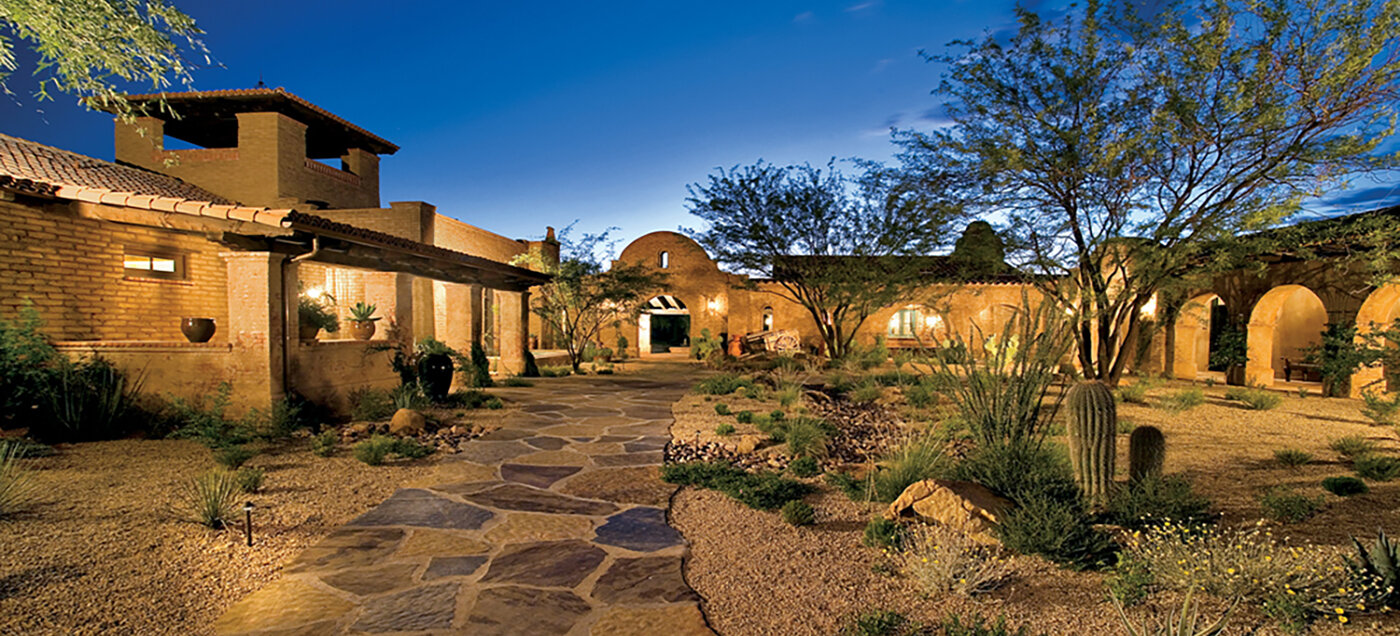Residential Real Estate News

Housing Starts Down in July, Supply Chain Challenges Remain in U.S.
Residential News » Scottsdale Edition | By David Barley | August 19, 2021 8:37 AM ET
According to a new report from the U.S. Department of Housing and Urban Development and the U.S. Census Bureau this week, supply chain and labor challenges helped to push overall housing starts down 7.0 percent to a seasonally adjusted annual rate of 1.53 million units.
The July 2021 reading of 1.53 million starts is the number of housing units builders would begin if development kept this pace for the next 12 months. Within this overall number, single-family starts decreased 4.5 percent to a 1.11 million seasonally adjusted annual rate. The multifamily sector, which includes apartment buildings and condos, decreased 13.1 percent to a 423,000 pace.
"The latest start numbers reflect declining builder sentiment as they continue to grapple with high building material prices, production bottlenecks and labor shortages," said Chuck Fowke, chairman of the National Association of Home Builders. "Policymakers need to prioritize the U.S. supply chain for items like building materials to ensure builders can add additional inventory the housing market desperately needs."
"The decline in single-family permits indicates that builders are slowing construction activity as costs rise," said NAHB Assistant Vice President of Forecasting & Analysis Danushka Nanayakkara-Skillington. "Starts began the year on a strong footing but in recent months some projects have been forced to pause due to both the availability and costs of materials."
On a regional and year-to-date basis (January through July of 2021 compared to that same time frame a year ago), combined single-family and multifamily starts are 27.7 percent higher in the Northeast, 20.8 percent higher in the Midwest, 18.5 percent higher in the South and 27.7 percent higher in the West.
Overall permits increased 2.6 percent to a 1.64 million unit annualized rate in July. Single-family permits decreased 1.7 percent to a 1.05 million-unit rate. Multifamily permits increased 11.2 percent to a 587,000 pace.
Looking at regional permit data on a year-to-date basis, permits are 24.9 percent higher in the Northeast, 23.0 percent higher in the Midwest, 25.9 percent higher in the South and 28.2 percent higher in the West.

The National Association of Realtors Chief Economist Lawrence Yun also commented, "Rents will be soaring in the coming months, especially for apartment units, as homebuilding retreated in July. There was a housing shortage before the pandemic, and the shortage has been exacerbated during the pandemic. Therefore, homebuilding needed to be greatly ramped up as the jobs recovery took hold. Yet in July, housing starts fell by 7% -- single-family construction is down by 4% and multifamily construction is down by 13%. Other factors holding back construction: supply-chain disruptions in getting the right material on a timely basis, lags in getting approvals for land lot development, and labor shortages."
Yun continues, "With home prices having risen by record amounts over the past year, homebuying will become an increasing challenge, and a good number of households may simply decide to rent. In addition, the jobs recovery is enticing people out of their parents' homes to seek their own housing. Consequently, rental demand is rising strongly. With an inadequate supply of available homes, rents will be strengthening and adding further pressure to overall consumer price inflation."
The Mortgage Bankers Association Chief Economist Mike Fratantoni also made the following comments on this new housing data for July, "Both single-family and multifamily starts declined in July relative to June, but single-family starts remain almost 12% higher than last year. There are now almost 690,000 single-family homes under construction - the largest number since 2007. This is clearly a positive sign given the remarkably low levels of inventory on the market.
"Permits for single-family homes dropped slightly over the month but were higher than a year ago and remain higher than the level of starts. The pace of construction should continue to increase, particularly if supply-chain constraints begin to loosen."
Sign Up Free | The WPJ Weekly Newsletter
Relevant real estate news.
Actionable market intelligence.
Right to your inbox every week.
Real Estate Listings Showcase
Related News Stories
Residential Real Estate Headlines
- Las Vegas Area Home Prices Uptick 4.3 Percent Annually in March
- Single-Family Rent Growth in U.S. Trends Upward in 2025
- U.S. Mortgage Rates Tick Down Post Trump Tariffs Commencement
- President Trump's 'Liberation Day' Tariffs Potential Impact on the U.S. Housing and Mortgage Markets
- Baby Boomers Biggest Cohort of U.S. Home Buyers in 2025 as Millennials Decline
- U.S. Monthly Housing Payments Hit Record High in 2025
- U.S. Pending Home Sales Uptick in February
- Global Prime Residential Rent Slowdown Continued in Late 2024
- Ireland Home Price Inflation Hits 8 Year High in Early 2025
- Existing Home Sales in America Uptick in February
- Great Miami Area Residential Sales Decline 15 Percent Annually in February
- Mortgage Rates Uptick in Mid-March, Ending 9-Week Decline in U.S.
- World Property Ventures Builds the Future of Real Estate with New Funding Round
- U.S. Builder Sentiment Declines Amid Economic Uncertainty and Rising Costs
- Black Homeownership Rates in U.S. Enjoy Largest Annual Increase of All Racial Groups
- Wealthy Renters Are Taking Over More of the U.S. Rental Market
- If U.S. Congress Does Not Extend NFIP Soon, Thousands of Daily Home Closings Impacted
- U.S. Mortgage Applications Spike 11 Percent in Early March
- Greater Palm Beach Area Residential Sales Rise in Early 2025
- New Apartments in U.S. Are Leasing at Slowest Pace on Record
- U.S. Mortgage Rates Drop to 4 Month Low in March
- Overall U.S. Mortgage Delinquency Rates Dip in December
- New Tariffs on Canada, Mexico to Impact U.S. Homebuilder Input Costs
- Monaco's Property Market: A Tale of Two Cities
- U.S. Home Purchase Cancellations Surge, 1 in 7 Sales Getting Canceled
- U.S. Pending Home Sales Hit Historic Low in Early 2025
- Greater Miami Area Residential Sales Dip in January
- Governor DeSantis Supports Ending Property Taxes in Florida
- WPV Aims to Become the Berkshire Hathaway of Real Estate Tech
- U.S. Home Sales Slump Continues in January
- Average Americans Spend 38 Percent of Monthly Income on Mortgage Payments
- Switzerland's Safe-Haven Appeal Grows with World's Wealthy Homebuyers
- U.S. Builder Confidence Rapidly Declines in February
- Las Vegas Home Sales Rise 6.7 Percent Annually in January, Condo Sales Dip
- Homebuyer Demand in America Drops to 5-Year Low in Early 2025
- Ownership More Affordable Than Renting in Most U.S. Markets
- The World's First Global Listings Service Launches, Called a GLS
- Home Prices Continue to Rise in 89 Percent of U.S. Metros in Late 2024
- Global Luxury Residential Prices Showed Gradual Improvement in Late 2024
- U.S. Construction Hiring Rate Drops to Lowest Levels in 5 Years





